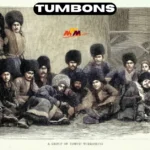Families often assume their household toys are harmless in the presence of pets, yet the sensory design of many modern toys introduces risks that are not immediately obvious. These risks matter not only for safety but also when parents consider filing a claim after a dog bite incident. When a bite occurs during play, the cause often stems from how a dog interprets sounds, motion, and energy around children’s toys.
Understanding these interactions requires shifting attention away from general dog behavior and instead examining specific sensory triggers. Toy noises, mechanical motions, flashing lights, and the unpredictable ways children play can create an environment that overwhelms a dog’s perception. When these sensory elements combine, they influence the way a dog reacts long before a child realizes danger.
Discover insights that matter—click to explore our Related Post for deeper knowledge!
Why Sound Frequency From Toys Distorts a Dog’s Perception
A leading factor in toy-related bite incidents is sound frequency. Dogs hear at higher ranges than humans, which means toy squeals, electronic chirps, or rapid clicking tones may register to them in an entirely different category of meaning. What a child experiences as a playful sound can resemble the noises of small animals trying to escape or vocalizing distress.
This creates tension in the dog long before the child notices a change in behavior. Some dogs freeze and focus intensely on the toy. Others shift into investigative mode, nudging or pawing at the sound source. When a child attempts to keep playing during this moment, the dog’s instincts can override training. Understanding this dynamic is important for families who later find themselves filing a claim after a dog bite that initially seemed unexpected.
The Influence of Mechanical Movement on Survival Instincts
Motorized toys introduce another powerful trigger. Sudden acceleration, directional change, and jittery motion mimic prey movement in the wild. Even well-trained pets retain remnants of instinctive chase behavior. When a toy darts across the floor and a child reaches for it at the same time, the dog often reacts faster than the child, aiming for the moving object but catching skin instead.
These moments unfold quickly and rarely resemble aggression. Instead, the dog responds to a combination of motion and noise that its brain interprets as an immediate stimulus. The child’s hand becomes part of the motion pattern, which is why bites frequently occur on fingers, wrists, and forearms during mechanical toy play.
Animal Imitation Noises and Their Impact on Dog Stress Levels
Some toys emit growls, squeals, chirps, or recordings meant to imitate animals. These sounds create unique confusion for dogs because the noises fall into categories that dogs use for territorial assessment. A growl sound may signal a challenge, while a high-pitched squeal may mimic the sound of an injured animal. When the dog approaches to identify the source, it may move quickly or assertively, unintentionally pushing into the child’s space.
If the child reacts with surprise or abrupt movement, the dog’s confusion escalates. This cycle of mixed signals creates an environment where a bite can occur simply from misunderstanding rather than hostility.
Visual Triggers: Flashing Lights, Bright Colors, and Rapid Motion
Toys that incorporate bright lights or motion effects pose additional challenges. Dogs interpret visual cues differently and can become overstimulated by flashing or spinning elements. These visual stimuli often combine with noise or movement, multiplying the effect.
Older dogs or dogs with anxiety may feel the need to escape the situation. When a child blocks this path without realizing it, the dog may nip or push as a reflexive escape response. Visual overstimulation is one of the least understood factors in bite incidents, yet it plays a significant role in homes filled with high sensory toys.
How Children’s Play Behavior Intensifies Sensory Overload
Even without toys, children naturally move with unpredictable bursts of energy. Add toys that squeak, flash, or move erratically, and the stimulation multiplies. Children often wave toys at eye level, pull them away quickly, or run while holding them. To a dog, this chaotic pattern resembles play between animals, which can encourage rough responses.
Children rarely recognize when a dog shifts from playful interest to nervous tension. Subtle stress cues such as lip licking, stiff posture, or excessive focus often go unnoticed.
Limitations of Training in High Sensory Environments
Training helps dogs manage many situations, but sensory overload places even calm dogs in reactive states. A home filled with sound and motion can override learned behaviors. Owners may underestimate how powerful instinctive responses can be when toys mimic prey or conflict signals.
Proactive management requires recognizing the specific triggers that affect each dog. Some dogs respond strongly to sound while others react to motion or visual input. Understanding these individual patterns allows families to design safer play routines.
Creating Safer Play Environments
Parents can reduce risks by supervising play, placing boundaries around high sensory toys, and teaching children to pause when a dog shows early signs of discomfort. Separating the dog during intense play sessions is another effective strategy. Many families store noisy or mechanical toys in a separate area and use them when the dog is resting or outdoors.
Final Thoughts
Toy-related dog bite incidents rarely occur in isolation. They develop from a layered combination of sound, motion, and visual triggers that influence how a dog processes its environment. Recognizing these triggers gives families a clearer understanding of what happened and why. It also provides essential context when the situation leads to a need for filing a claim after a dog bite incident. By focusing on sensory triggers and early stress signals, families can create safer play environments that protect both children and pets.
Dive into innovation—our Featured Post has the content that can inspire your next move.






